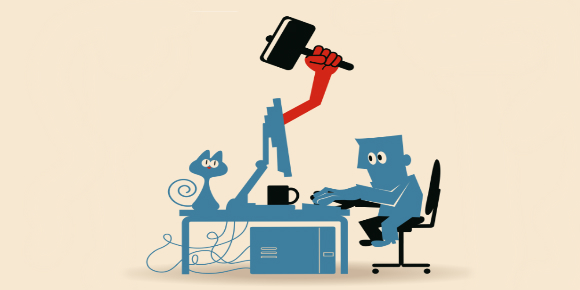Can productivity tools actually help you be more productive? Absolutely. Will they instantly make you get more stuff done? Last I checked, magic wasn’t real, so no. Productivity tools can help you stay organized and connected, bury you in a cycle of obsessive-compulsive organizational overindulgence, or just sit around and do nothing. It really depends on how you use them, and how effective you are without the technology.
If you’ve already determined that you’re a productivity ninja and you just need some help keeping up with the deluge, some sort of productivity app can help you stay connected and organized. If you use it properly, that is.
Don’t Let it Take Over
If you let them run your life, productivity apps can become more of a time suck than LOL cats and celebrity smut combined. Once you start spending more time updating, checking and moving things around to fit the inevitable changes in your schedule, you’ll soon be spending more time wrapping your head around your productivity tools than actually being productive. There comes a point when using tools becomes more work than they’re worth, so be sure that they’re not adding extra steps to everything you do.
Instead, a productivity app should replace something you already do, and make it easier. A to-do app can potentially replace plies of red-flagged tasks in Outlook and eliminate the circle of Post-It notes obscuring your monitor. Using Google Drive to share and co-edit documents should replace passing stuff back and forth on the server, or that pocketful of mystery jump drives. If you’re just using a productivity tool on top of the same old stuff you were doing anyway, the tool isn’t valuable and you’re kind of missing the point.
Make the Most of Your Tools
So. You’ve tossed out the sticky notes and jump drives. You’re on top of your game, much like Michael Jordan in 1992. But then everyone starts to notice, and they start to lean on you. You remember everything, right? You always know where the most recent version of that document is, yeah?
The best way to avoid being everyone’s productivity scapegoat is to share what works with them. Most productivity apps don’t work for stink if only one person on a team decides to use them. But if you can get everyone on board with the same tools, everyone inevitably stays on the same page.
Picking a Productive Productivity App
Before you load up your smartphone and desktop with everything productivity from your neighborhood app store, you’ll need to figure out where you really need help. Are you looking for a to-do checklist, cloud storage, task management, brainstorming tools, or all of the above? The key is to pick up only what you need, and choose apps that combine those needs whenever possible. The less time you spend switching between apps, the better.
There are plenty of good free apps out there that can help you on your way, but they tend to be single-purpose and a little thin on the features and scalability side. If the app in question costs money, it can be a tough sell to upper management, but if you can show any ROI on it, you’ll have a much better chance of getting your hands on what you need. But alas, it can be tough to turn time savings estimates into real savings that you can show to the person holding the purse.
Allow us to help you justify that price tag with this handy-dandy productivity calculator. All you have to do is enter some basic information about how you and/or your team spend your day, and we show you what your productivity gains would be if you were using our project and task management software. If the numbers surprise you, it’s high time to take a look at what multi-purpose productivity tools (like Mindjet, of course) can actually do for you, your team, and most importantly, your returns.

